Police Violence Against Women of Color (Audio)
Truthdig Editor in Chief Robert Scheer interviews attorney Andrea J. Ritchie, an advocate for the LGBTQ community and an expert on race, gender and criminal justice, about "invisible" police violence against vulnerable communities.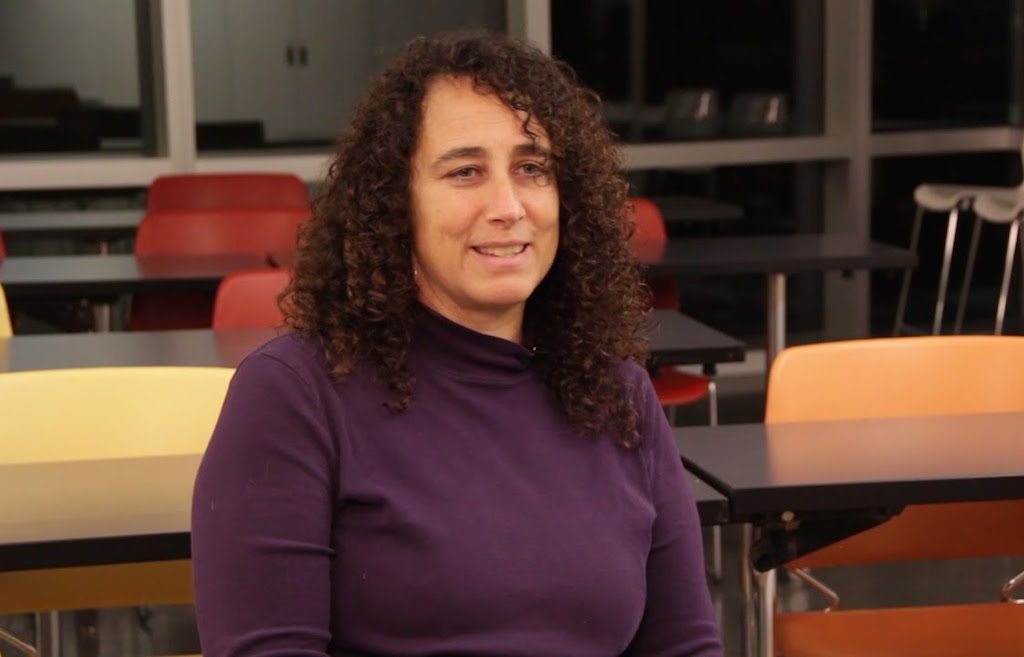 Andrea J. Ritchie in 2017. (Screenshot via YouTube)
Andrea J. Ritchie in 2017. (Screenshot via YouTube)
Listen to the full interview in the player above, and read the transcript below. You can also find past editions of “Scheer Intelligence” here.
RS: Hi, this is Robert Scheer, and another edition of Scheer Intelligence. I know it sounds like an arrogant title, but the intelligence is expected to come from my guests; I’m kind of like the Central Intelligence Agency of progressive journalism. And my guest today is Andrea Ritchie. I, full confession, finished her book about a couple hours ago, at four in the morning. And I think it’s really one of the most important historical works: Invisible No More: Police Violence Against Black Women and Women of Color. What it does is it takes policing, and we hear a lot about policing, and correctly so, and the large number of poor people and people of color, particularly African-Americans, who are incarcerated, who are on Death Row. And we understand all the issues about policing, and very often we center on the male prisoners, which is a great national tragedy—maybe it is the greatest national tragedy, perhaps. But this book is a reminder that the numbers in terms of incarcerated does not tell the whole story. And the intimidation, indeed the rape, the murder, of women, particularly women of color going back to Native Americans, is really the most disturbing, genocidal vision of America. And this is a book, this is a work of history that takes us back to the colonialists who we otherwise, you know, celebrate and so forth. And it’s not something you mentioned in the book, but I remember the first time Norman Lear, who I’ve interviewed for this podcast, and he got a copy of one of the original copies of the Declaration of Independence and showed it at my class at USC. And one of the students actually read it and came up to me and said, do you know how they referred to Native Americans in the Declaration of Independence? And I hadn’t, didn’t know that. And they’re referred to as “savages.” And that caused a whole discussion in our class. But reading your book to begin with, one is reminded that the treatment of Native Americans, and particularly women and their children, was nothing short of savagery.
AR: Absolutely. It’s, thank you so much for saying that; I’m not a historian, so I think that I was particularly sensitive to trying to do my best in terms of really honoring the history of indigenous people and African-descended people who were enslaved, and immigrants to this country, in terms of their experiences of policing. But one of the things that I was able to document is that as the Continental Congress was drafting the Declaration of Independence, proclaiming all men to be equal, members of sort of militias of settlers were torturing, killing, and scalping women and children of the Delaware and Cherokee nations, at that very moment. So at the very moment that this Declaration that many people looked to as a beacon of freedom was being drafted, indigenous women and children were being subjected to genocide that, you know, was necessary, basically, to found this country. So that was definitely a beginning of policing in this country, and a manifestation of the fact that women and children, and indigenous women in particular and black women in particular, have always been targets of police violence in the United States.
RS: Yeah. I’m talking to Andrea Ritchie, who—and you are an attorney, and you basically got into this whole field, in addition to being a black woman, by, through your legal activity, is that not correct?
AR: In fact, it started more when I was working, I was on the board of a shelter that was for survivors of domestic violence and homeless people. And I was asked to serve on an advisory committee to the city of Toronto that was examining how police in Toronto were responding to sexual assault allegations. And what we started to hear from women in the shelter and beyond was more about police officers perpetrating sexual assault against them in various forms. And that’s what sort of caught my attention, and particularly at the time, when there was sort of this international conversation going on about the Rodney King incident and about physical violence against black men by police officers and racial profiling of black men by police officers. I was of course very engaged in that conversation, but then sort of wondering why the stories that I was hearing every day from women, black women and other women of color, about police sexually assaulting them, were not part of the same conversation. And I have to say that I asked myself the same question today; I mean, we’re in the middle of a national conversation about sexual harassment and assault, in the entertainment industry certainly in California, but also increasingly sort of in other industries, in agricultural and domestic work industries. And still, as part of that national conversation about sexual violence, we’re not talking about sexual violence that’s perpetrated by police officers. And so I’m hoping that that’s going to start to shift, but it’s certainly something that has been true for the entire 20 years that I’ve been working on these issues.
RS: You know, it’s interesting. One reason I like doing these podcasts is it gets me to actually read books [laughs], you know. And then I picked up your book and I thought, oh, this is going to be rough going. But you know, the fact is, you do an excellent job of humanizing the victims, so they’re not just numbers; they are actually women who love their children, that care. And if I take it up to a more contemporary period, I particularly like your discussion of the treatment of women on welfare. Because we went through a whole welfare reform, and we’ve discussed it on this show, where somehow the idea that poor women who were living on welfare, they couldn’t possibly be good mothers, they couldn’t possibly love their children. And then, you know, starting with Bill Clinton’s welfare reform we destroyed the federal program. And what you do in your book, whether you start with the Native Americans, or slavery, but taking it up to the contemporary time of just being poor, a poor mother, single mother, generally, in this country, and you show how even these social workers, abetted by the police, can go into families and just destroy them, and criminalize mothering. I found that to be the most powerful part of the book, ‘cause it is contemporary. What is happening, basically, to many people of color, but also people, white people who are poor? Do you want to talk a little bit about them?
AR: Sure. I mean, I think that this is what happens when we start to look at policing through the lens of women’s experiences, is we start to see additional sites of policing. So we’re all familiar with driving while black; we’re all familiar with stop and frisk; we’re familiar with what we traditionally see as racial profiling and sites of police violence. And when you start to look at these issues through the experiences of women, you see new sites of racial profiling and police violence. And child welfare enforcement is definitely one of them; welfare policing and policing of poverty is definitely another. And the reason that I went to such great lengths—I mean, there’s many reasons I went to such great lengths to sort of set historical context, but one of them is because the perceptions of black women and women of color as bad mothers are deeply rooted in slavery in history, right? Where you had to frame black women as bad mothers in order to steal their children from them to sell them off to somebody else. You had to frame them as bad mothers in order to rape them into forced motherhood. You had to frame them as bad mothers in order to force them to care for white children and take them away from caring for their own children. And those same stereotypes are what informed police and child welfare authorities’ interactions with black women to this day. And as you point out, black mothers are doing their best to care for their children under conditions where they, you know, are not given support in society, whether it’s healthcare, proper education for their kids, proper housing, proper opportunities in terms of employment and so forth, and are criminalized at every turn, whether they leave their kid for five minutes at a food court at a mall, where they can see them, so they can go in for a job interview in order to better support their children, and are criminalized for that. And if they aren’t able to provide for their children to a standard that is set by white middle-class social workers, then they’re criminalized for that. If they are unable to protect their children from abuse from other members of their families, who may also be abusing them as mothers, they’re criminalized for that. And if they defend themselves against their abusers in order to protect their children, they’re criminalized for that. And all of that is deeply rooted in these perceptions of black women and women of color as not good mothers and as not worthy of protection as mothers. And that’s deeply rooted in history, so once you sort of see those connections between sort of historical stories that are told about black women, and the ways in which black women are treated today by child welfare authorities and police, then you get just a deeper understanding of how racism plays out in this country, and how many ways it plays out, and how hard it is to sort of unearth those stories. And that’s why it felt so important to me to tell women’s stories in a way that reflected their humanity and their complexity of their lives, because otherwise we just are operating on these sort of cartoonish caricatures of what black women are supposed to be, as opposed to the realities of black women and black women’s humanity.
RS: I’m speaking with Andrea Ritchie, attorney and advocate, and author of the new book Invisible No More: Police Violence Against Black Women and Women of Color. And I do want to raise a question about that, because yes, there’s no question; women of color have been victimized, and you know obviously, with slavery and the Native Americans, and then segregation into, obviously, the present. But also it’s the victimization of poor people. It really goes to the word of vulnerability. And I know in my own case it happened that my mother was, you know, unmarried, and we lived on home relief for three, four years. You know, and I covered welfare for the LA Times, and welfare reform, so-called. And you know, majority of the people on welfare were white. And that vulnerability exists there, too; a total denigration of what goes into mothering when you’re poor, and how difficult it is. And the most eloquent part of this book, for me, was a celebration, really, of people trying to raise children, whatever their color—and yes, it is more difficult [for] a person of color. But how much love goes into raising children, and how difficult it is when you’re trying to get a job, or hold a job, or deal with welfare officials. And the book is actually a poetic tribute to women surviving under these circumstances. I don’t know, I don’t know if that was your goal.
AR: It was, and so it’s really gratifying to hear you say that. Because I think that what you’re saying about it being a difficult book to read, I mean, it definitely includes a lot of instances of violence, a lot of kinds of violence, a lot of violence across time and space. And I wanted to counter that or balance that with sort of the real resistance and resilience that black women and women of color have shown throughout history, from the moment that they were dragged onto a slave ship, and that indigenous women have shown from the moment that Christopher Columbus landed here. And how our very survival, and our very insistence on resistance and raising families and moving forward and being part of broader resistance movements, is to be honored and celebrated and respected, so that we’re not just the woman who, you know, we see for 10 seconds on a police dashcam video being abused or assaulted, or raped or sexually assaulted or strip searched. That we are whole beings who resist and thrive and survive despite that. And that was an equally important goal of the book, and to make more visible that resistance, because I think that much as black women and women of color’s experiences of police violence and state violence have been invisible, so has our resistance to it. So I think folks sort of see now more attention to those issues and think, oh, this is a new development, since sort of 2014, since Sandra Bland, since #SayHerName. But in fact, that resistance has been going on throughout history, and I wanted to bring that as much to light as the violence itself.
RS: Let me just get to the policing part. Because you emphasize that, you know, very much. We sort of have this view, and you know, even many liberal people, that that police are doing a tough job and they’re out there. But you remind us that the history of policing goes back to, you know, slave-catching. And you know, basically, policing was an extension of the power structure, to keep vulnerable people in line, whether they were Native Americans forced off their land; whether they were freed slaves returned, or escaped slaves returned to their so-called masters; whether it was this world of segregation. Or in the North, without slavery, just keeping people in their ghetto places and so forth. And policing was not some wonderful thing just to preserve law and order; it was the way of maintaining power. And so this use of the word “police,” police violence—I don’t want to put words in your mouth, but reading it I got the feeling violence is built in—violence against people, and innocent people, mothers and children—is built in to the very purpose of the policing activity. Is that going too far?
AR: Nope, not at all. I would say that one of the assertions I make in the book is that policing of gender and sexuality has, is an integral part of policing in and of itself. So some of the first urban police forces—and this is again why it was important to sort of delve into history. Some of the first urban police forces—and there’s particular documentation of this in California—had a particular role of making urban spaces safe for middle-class white people, or feel safe to middle-class white people. And that meant clearing the streets of everyone who disrupted sort of white, middle-class norms and expectations. So that meant removing people who were poor, removing people who were homeless, removing people who were disabled, removing people whose gender expressions didn’t conform to middle-class norms, removing women who were out alone at night under common nightwalker laws, assuming that they must be engaged in prostitution if they weren’t accompanied by a man or out with permission of a man or out because they were doing work for a white family. And that that’s what urban police forces were about. And so they have been about sort of regulating the movements of poor people, people of color, and women of color throughout history. And so, and about enforcing notions of gender and morality throughout history. And so that is built in. And so then, some of the instances of policing that I describe in the book, whether they took place in Atlanta in 1866 or in New York City in 2016, they often look very similar. And so that is something that we need to grapple with when we’re trying to think about, can we reform this system? Can we make this system something that actually provides safety for women of color? And it, I mean, people can read the book and draw their own conclusions, but it doesn’t appear that we’re able to, haven’t been able to so far, make sure that police are not primary perpetrators of violence against black women and women of color.
RS: [omission] It’s so interesting, this divorcing the question of police brutality, violence and policing, from women, when in fact policing authority—and as I say, going back to treatment of Native Americans, but slave-catchers and so forth—policing power of one kind or another has basically been the main force operating on poor women of color. I mean, they’re the most vulnerable. And you even point out that in family disputes, you know, getting down to the nitty-gritty of neighbors arguing or what goes on in a family, it’s the police who come in and basically make decisions, and sometimes I guess they make good decisions, but you have an awful lot of evidence that very often they supposedly [will] be coming to the aid of the most vulnerable, and then they exploit ‘em. I mean, you’ve got a shocking amount of police rape of vulnerable women. You know, you have serial police rapists, you have people harassed at the police station; I mean, there’s a very extensive retelling here in the book of the abuse of policing power. And yet we use the policing power as kind of an alternative family counseling service, you know.
AR: You’re absolutely right. I think that in most communities, the police are not only the first response from government, but the only government response or service available to people. And the point that I was trying to make with the sort of abundance of stories that you’re talking about is that the police respond in, when they’re answering calls for assistance, in ways that are very similar to the way that they police on a general basis. So if they are profiling black women as inherently sexually deviant and engaged in prostitution, for instance, when they’re patrolling the streets, which they do, again based in these narratives rooted in slavery, then they’re going to do that when they’re responding to a call for help for a sexual assault or domestic violence. They’re going to assume that the woman is responsible, that she played a role, that she’s in fact maybe even the perpetrator of violence, and certainly that she’s not deserving of protection. And you mentioned earlier that there was a time in American history when sexual violence against black women or native women was not against the law, was actually routine, was just built into society and not against the law and never punished. And that’s no longer true on the books, but it is true in the way that police enforce the law. And then, yes, police officers have been quoted many times as saying, of course when I step into a situation where a woman is vulnerable, where she’s needing my help for protection, I’m going to take advantage of that and I’m going to look for sexual favors, or I’m going to ask her out on a date, or I’m going to sexually harass her. And almost talking about that as if that’s part of the perks of the job. And I think that’s also sort of built into the structure of policing in a way that top law enforcement officials have pointed out, but that we don’t talk about in our daily conversations. And when we’re talking about this issue of sexual violence and police power and vulnerability—you know, the conversation we’re having now about sexual harassment in the workplace has to do with power and vulnerability, right? Well, who has more power in our society than police officers, who have the power to use physical force against you, to arrest you, to charge you with something that could carry very serious penalties, have consequences for your ability to keep your children, to keep your job, to keep your housing, and so forth? That’s a tremendous amount of power that they exercise in day-to-day interactions. They have tremendous access to women and young women, whether it’s because they’re stationed in schools, because they’re the people who are responding to calls for help, because they are the people conducting traffic stops, and they’re the people who are enforcing laws about, around prostitution or vagrancy or, you know, public order. They have tremendous power, and they have very little supervision; they have a tremendous amount of discretion. So it’s just almost a setup for that kind of situation that we’re talking about in other contexts, but not talking about as much in this context. So I think that your point about vulnerability is really important, because the police really prey on women who they think won’t be believed when they come forward, who need their help in other ways, who are vulnerable to retaliation, or who are otherwise framed by society as folks who are kind of inviolable or undeserving of protection.
RS: Yeah, and it goes against this convenient narrative of a besieged police force, surrounded by hostile, angry, big men; in the case of Ferguson that was their defense. And what you have is—and as I say, the power of this book is in the documentation. It’s not just one story or heritage, you know, and it’s not one part of the country, and it’s not one part of our history; as I say, it goes back through the entire history of the country. And it’s, you know, on street corners, it’s in the police station, it’s when they supposedly come to the home—and when you mention, you know, ask on a date—that would be civilized, in a way. I mean, you know, what we’re really talking about, very often, is rape of the most brutal kind. You know, and tearing families apart, and so forth. And I wanted to ask you about a community that you don’t go into as much, but is very important in Los Angeles, in New York, in San Francisco—I’m doing this from Los Angeles, and here we have a vast homeless population. We have a vast street population. Looking at the stats, it seems that the violence against women in this community, and particularly women of color, is pervasive. And somehow accepted. And I wonder whether that isn’t sort of the most current manifestation of the, you know, exploitation of vulnerable women. I mean, we forget there’s a lot of women in these homeless communities, and not necessarily always the most visible; maybe they’re stuck in some, you know, various shelters or what have you, but nonetheless, sexual violence,you discuss in your book, really seems to be prevalent in that community.
AR: Absolutely, and I mean, there’s definitely evidence also of police violence against homeless women in many, many instances across the country and certainly in Los Angeles. And I talk quite a bit about broken windows policing in the book, which is a way that black women are targeted. But I mean, I’m certainly also thinking about Marlene Pinnock, right, who was beaten by the side of the road in Los Angeles, who was homeless, who was on her way to a place where she felt safe to sleep, right? So what you’re saying is that women might not be as visible on the street ‘cause they’re trying to find safer places to sleep where they can escape sexual and other forms of violence from members of the community, and then as she’s trying to get to that place, a police officer, you know, stops her and beats her brutally by the side of the road for no reason other than, you know, that she was walking along a highway. And so that’s kind of one example of how police violence affects homeless folks right there in Los Angeles, but also just the kind of daily cycle of arrest and harassment that happens in the context of broken windows policing, which for folks who don’t know is sort of this theory of policing that if you arrest people for minor offenses then you prevent more serious crimes, and that if you stop folks when they’re committing minor offenses then you prevent them from becoming more serious offenders. It’s completely unproven, it’s based on a magazine article that was written in 1982 and just has repeatedly been disproven as a theory, but nevertheless is the way that police in Los Angeles and New York approach people living in public spaces. And what I talk about in the book is that that gives them, because the laws that they’re able to enforce in that context, whether it’s, you know, in California I know there’s a lot of cities that have these, what are called sit-lie laws, which means that people can’t sit in public or lie down in public spaces. And the ways that police have a lot of discretion in terms of how to enforce that, right? If you go to any park on any given day in New York, whether it’s Central Park or in Los Angeles, Griffith Park, there are people lying down all over the place; they’re picnicking, they’re there with their families, they’re having a nap, they’re doing a number of things. So police are very selective about how they enforce these laws, and they enforce them selectively against homeless people and against homeless women. And then there’s also ways in which people whose gender feels nonconforming to police officers, and particularly trans and gender nonconforming youth of color, are targeted for sort of these very vague offenses, like disorderly conduct or lewd conduct. Which, again, you know, what that looks like is in the eye of the beholder, and the police are very discriminatory in terms of how they enforce those laws. And those are the ways in which communities that are existing in public spaces, homeless folks, street vendors, folks who are trying to survive under difficult conditions, are targeted by police officers using both the specific laws that prohibit certain kinds of behaviors in public, or very general laws like disorderly conduct that are used by officers to police particular populations’ movements and existence in public spaces.
RS: Just in terms of your own life experience, what led you to care about people that many people want to think of as disposable people, as the other? What made you different?
AR: I mean, I think a few things. One is that those people are my people; they’re my family, they’re my community, they’re folks who could be my sister, my cousin, my auntie. I tell a story at the beginning of the book about learning about a Jamaican woman who was strip-searched on a street corner in Toronto, just because she was standing there at 1am, and according to police officers, because she was black, a woman standing on a street corner at 1am made her, quote unquote, look like a drug dealer. And just thinking, that could have been my cousin. That could have been my mom. That could have been anyone from the island that my mom comes from, or anyone in my family, and people I care about in my community. So that was one thing. I think I also came from a family that was very committed to, I guess my mom would say, you know, doing things for other people, or I guess social activism or change. My dad, midlife, sort of left business, the business world, and went into public service. Because he just really felt like it was an important thing to do. My brother very much informed me politically; coming up, he was part of black power movements, and went back to Jamaica to really try and make change in terms of economic and social change there. So I just grew up around people who felt like it was important to be a part of our community and to try and make positive change in the community. And then, you know, as I said, these, the community that we’re talking about is my community.
RS: Just a last question about—first of all, I’ve never liked the word “queer,” and I know, I’ve had many discussions about it. But it does capture an historical experience, which by definition of law, it was criminalized; by standards of religion, it was made to be defined as immoral; in every which way, the power of society, whether science, the psychiatric community defined being gay as, you know, a deep sickness. And so I just wonder whether coming out of that community provides a sensitivity that goes against class, so even though you might become more successful and you might make more money, you still have somewhere in the memory of being vulnerable. And that’s a theme that I think runs through this book, ‘cause you remind us that to this day—and you have it in, you know, trans people arrested and so forth—the power of the police over that community has really been extensive. I just want to sort of end with, you know, that sensibility that this book has.
AR: I think in this book, and probably more so in another book I coauthored, called Queer Injustice: The Criminalization of LGBT People in the United States—
RS: Right, I was going to bring that up. Good, OK.
AR: Yeah, we talk about how—yeah. I mean, essentially policing has deep roots in enforcing, as I was saying earlier, you know, norms around, like literally enforcing the gender binary. There’s lots of cases in LA and in California of people being arrested for crossdressing right up until the eighties, and enforcing, you know, morality and codes. And again, in Los Angeles there’s been a lot of oppression and resistance around arrests of gay men for lewd conduct in bathrooms and public parks and so on, when they’re just using the bathroom or hanging out in a public park. And I think what, the story that Queer Injustice tells, and a little bit that Invisible No More tells, is that even when those laws are struck down, even when sodomy laws are struck down, the police find ways to enforce the remaining laws in very similar ways. So when I was working for Amnesty International I interviewed a trans woman in Los Angeles named Viviana Hernandez, who was working at the LGBT center at the time, who literally said, look, they used to arrest us for crossdressing and now they arrest us for loitering for the purposes of prostitution. But her experience was that it was pretty much the same. That police officers rolled up on trans women of color, saw them, read them as gender nonconforming, and therefore leapt to the conclusion that they must also be engaged in some kind of sexually deviant behavior. Decided that was prostitution and would arrest them onsite, basically, for essentially being gender nonconforming. Whether they did it under a crossdressing law that was struck down or they did it under a prostitution law that currently exists, the behavior was the same and the goal was the same, which was to rigidly enforce gender norms and gender binaries. And that plays out not only in terms of police violence, but also in terms of the violence that trans women experience from communities. So I know we lost a Latina trans community member just the other day to violence, the second trans person killed in 2018, and we’re only 12 days into it. And it’s because of the kinds of policing that we do, both with the police and criminalization, but also in our own communities, that that kind of violence takes place and continues. So that is definitely a central part of the story, and one that we need to address. There’s also been a rash of killings of black lesbians in Washington, D.C. and further South recently that, again, continues to reflect both the violence that society condones and perpetrates against queer communities, and particularly queer communities of color. I think as laws specifically targeting LGBT people have been struck down, the concentration of policing has focused on communities of color more and more, and then the lack of response to violence, both against trans women of color and LGBT people of color, has intensified as well. So that’s definitely a central part of the story and one that needs to be at the center of our resistance in order to really make sure that when we say Black Lives Matter, we mean all black lives matter, and that we’re going to fight for all black lives, whether they’re trans, queer, low-income, homeless, in the sex trade, in the drug trade, et cetera, you know, struggling to mother under the conditions that we force people to raise families under in this country, and everyone in our community.
RS: You know, I want to thank my guest Andrea Ritchie for writing this terrific book called Invisible No More: Police Violence Against Black Women and Women of Color. And it’s a Beacon Press book. And thanks again for being here.
AR: Thank you so much for having me.
RS: Thank you. And the producers of Scheer Intelligence are Rebecca Mooney and Josh Scheer. Our engineers at KCRW are Kat Yore and Mario Diaz. And thanks today to WBEZ in Chicago for helping bring our speaker to our audience. See you next time.
–Posted by Emma Niles.
Your support matters…Independent journalism is under threat and overshadowed by heavily funded mainstream media.
You can help level the playing field. Become a member.
Your tax-deductible contribution keeps us digging beneath the headlines to give you thought-provoking, investigative reporting and analysis that unearths what's really happening- without compromise.
Give today to support our courageous, independent journalists.

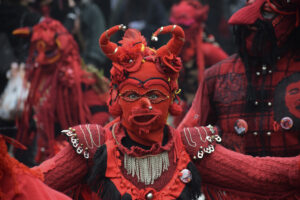

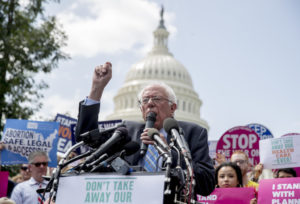

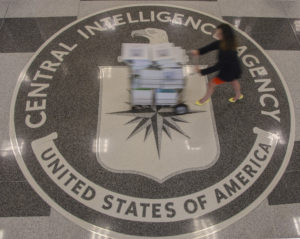
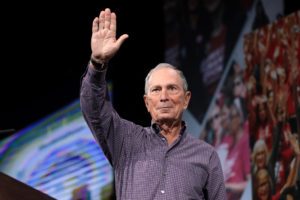


You need to be a supporter to comment.
There are currently no responses to this article.
Be the first to respond.